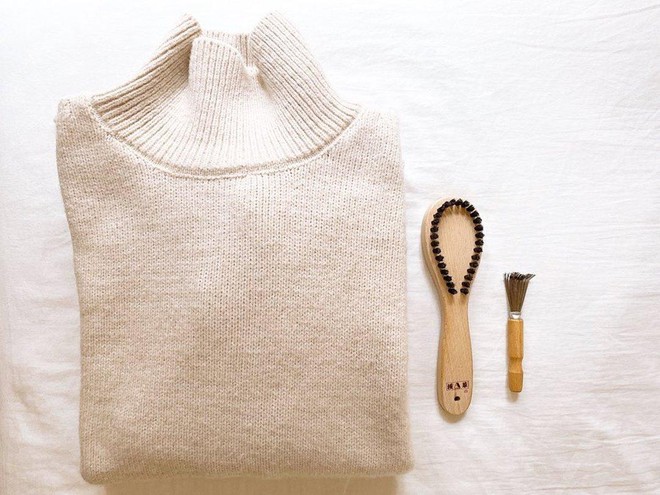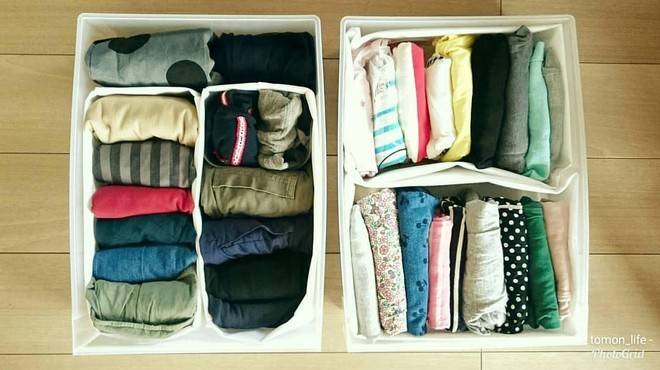Every time the seasons change, do you pack away your off-season clothes by folding them and putting them away, and then hanging up each of your family’s in-season clothes?
Don’t do that anymore! Japanese housewives have compiled simple and quick organization tips. If you follow the seasonal change plan below, you can complete your seasonal wardrobe change quickly and easily.
1. Gradually change seasons according to temperature
Since the temperature in spring fluctuates greatly, you should change your clothes gradually over the course of a month. A phased approach to changing seasons can avoid the dilemma of being desperate for winter clothes due to a sudden cold snap. We can decide when to change our clothes based on the temperature.
The average temperature reaches 15 to 20 degrees Celsius
Thick sweaters, velvet coats, or knitted coats can be put away first. You should keep thin knit and down jackets to cope with the unstable temperature. At the same time, you can replace the comforter with a lighter one to adapt to the warmer climate.
– Dry-cleaned and coated with a storage bag. This bag is made of non-woven fabric and has better breathability.

– Before putting the sweater away, use a lint brush to clean the dust on the surface, trim off any excess hair, and then put it in a storage box.

The average temperature exceeds 25 degrees Celsius
This usually means that spring is over and it’s time to put away your thin sweaters and wear clothes suitable for spring and summer. At this stage, be sure to have one or two light jackets or windbreakers on hand in case of emergencies.
Through this phased organization method, there is no need to invest a lot of time and effort all at once, and the seasonal transition becomes easier and more manageable.
2. Choose a sunny day to change clothes according to the season
As the temperature becomes more stable, you can choose a sunny day to start changing seasons. Doing so in sunny weather with relatively low humidity can prevent clothes from absorbing moisture. Japanese housewives also recommend adding a moisture absorber to the storage box, which can effectively keep clothes dry. Families in the South are also preparing for the upcoming rainy season.

3. Separate clothes to reduce cleaning effort
The wardrobe space is getting smaller and smaller after buying new clothes. Taking advantage of the changing seasons is a good time to clean out the clothes you don’t wear often, which can effectively free up storage space and simplify clothes management.
To organize your closet effectively, you should discard clothes if:
– The clothes are wrinkled or out of shape.
– The clothes are yellowed or stained.
– No longer fits or is out of date.
– The clothes haven’t been worn for a long time.
– The clothes are not age-appropriate.
4. Use separate boxes to sort and put clothes in storage boxes together
Whether it’s summer clothes or winter clothes, it’s a good idea to use separate boxes to sort them when putting them in the drawer. Clothes are not only stored neatly, but also not messy when rummaging.
Moreover, when the season changes, you can put your clothes in a storage box with a divider. It can store a large amount of clothes at once, eliminating the need to collect them one by one, and making organization more efficient.

When the seasons change, just take out the divider and put it in the drawer, and the seasonal change will be completed in just 10 minutes, easily and quickly. If you want to reduce the storage time, you must learn this skill.

The above are the seasonal clothes organization tips from Japanese housewives by using separate boxes to store after the change of seasons, you can effectively solve the problem of cumbersome sorting right now!
Become an Expert at Organizing Clothes at Home: Useful Tips
9 Clothing Storage Mistakes You’re Making Everyday Without Realizing
 Storage Mistakes You’re Making Everyday Without Realizing’>
Storage Mistakes You’re Making Everyday Without Realizing’>The following expert advice will help you recognize clothing care mistakes and how to fix them.





































